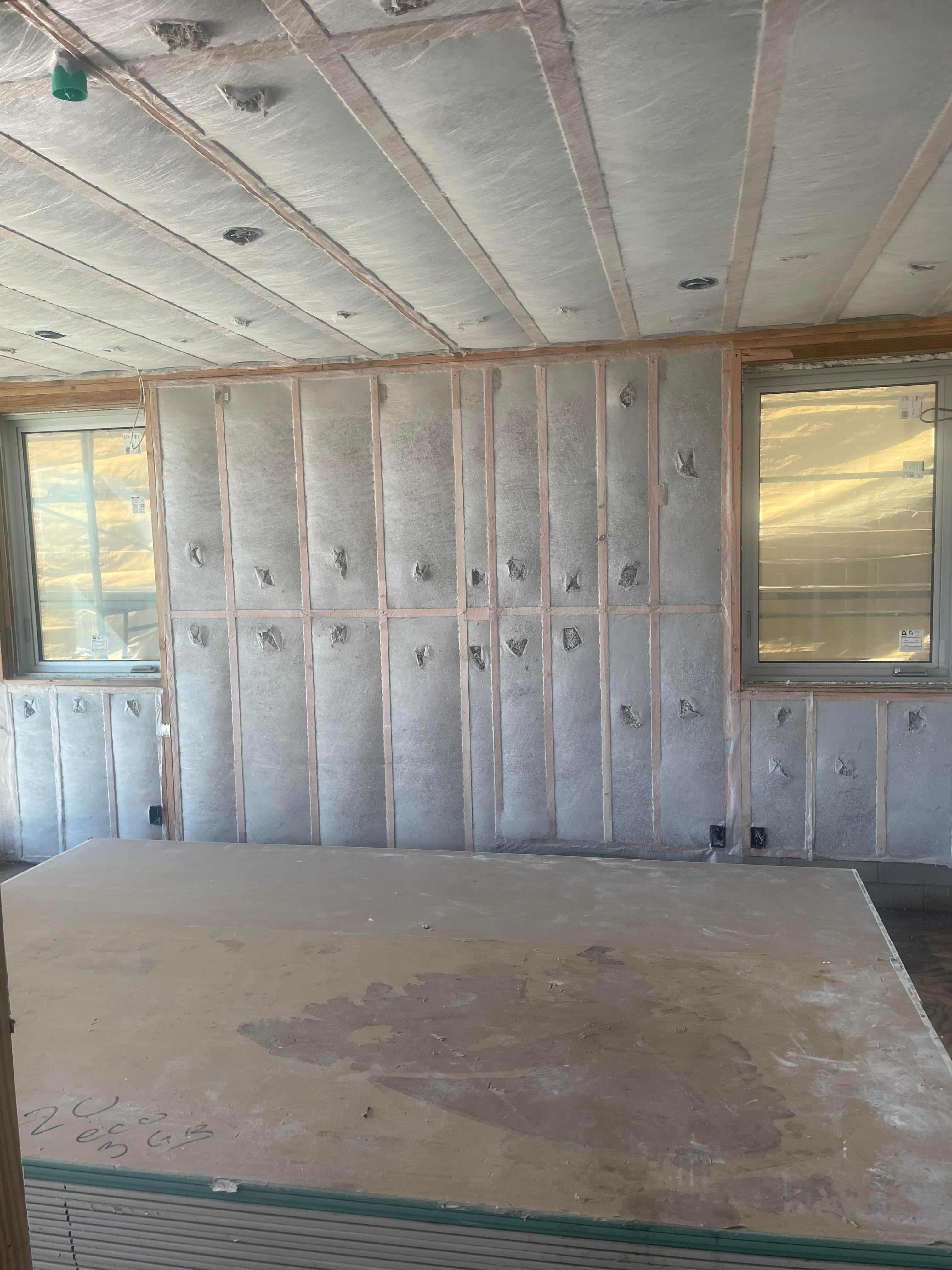Key Takeaways
- Not just any handyman should do blown-in insulation work; they should be licensed, insured, and certified (for example, by BPI or NAIMA).
- Understand the difference between cellulose (environmentally friendly) and fiberglass (better for moisture control), and choose the best option for your attic.
- Without good air sealing, insulation won’t work well. Ensure your contractor seals all leaks before installing insulation.
- To avoid unexpected costs, request a comprehensive inspection of the attic, a plan for removing items (if necessary), and detailed, written quotes.
- Your contractor should obtain the necessary permits, explain the warranty coverage, and ensure a thorough cleanup after the installation.
Want to hire contractors for blown-in insulation? Here is a comprehensive list of factors to consider when selecting the best option for your home.
Did you know? Sound insulation can reduce your home’s heating and cooling costs by up to 15%. (Source) That’s why it’s crucial to select the right blown in insulation contractors. If you don’t do it right, you could lose money, comfort, and peace of mind.
In this guide, we’ll tell you the ten most important things you need to know before hiring someone to do blown-in insulation work for you. This information will help you save time, money, and stress, whether you’re replacing old insulation or starting from scratch.
Let’s get started!
10 Key Tips Before Hiring a Blown-In Insulation Specialist
1. Not Every Contractor Is an Insulation Pro
It’s not enough to hire any handyman.
- Ask if they are experts in insulation.
- Verify if the company is certified by organisations such as BPI or NAIMA.
- Check out what other customers have to say on Yelp or Google.
Blown-in insulation contractors should possess training, a valid license, and adequate insurance. This keeps your home and your money safe.
2. Know the Types of Blown-In Insulation Materials
There are two types that are commonly used today:
- Cellulose: Made from paper that has been recycled and treated to be fireproof.
- Fibreglass: Made from spun glass and is often used to keep moisture out.
They both work well, but they do different things. Consult with your insulation contractor to determine which type is best suited for your attic.
Pro Tip: Cellulose is a good choice for homeowners who care about the environment. Fibreglass is often better in places that are damp.
3. Understand the Importance of R-Value
- The R-value indicates how effectively the insulation prevents heat from transferring through it.
- The recommended R-value for attics ranges from R-38 to R-60.
- Avoid hiring contractors who are unfamiliar with the R-value. They should measure it and explain it.
4. Insist on Air Sealing Before Insulating
Air leaks can still happen with blown-in insulation. You’re wasting money if your attic has holes.
Good attic insulation experts will:
- Seal all the holes in the air around pipes, wires, and chimneys.
- Fill in the gaps with foam or caulk.
- Ensure your insulation performs its intended function.
This step is necessary for even the best insulation to work well.
5. Get a Professional Home Energy Audit
An energy audit of your home shows you where you’re wasting energy. It helps you figure out where to put insulation first.
Some of the benefits are:
- Less money spent on energy
- More comfort at home
- Get local energy rebates
Some blown-in insulation services will do this audit before they start work. If not, ask them to suggest someone.
Table: Comparing Blown-In Insulation Materials

6. Know the True Blown-In Insulation Cost
The blown-in insulation cost depends on:
- Type of material.
- Size of the area (in square feet)
- How deep does the insulation need to be
- Getting ready (removing, sealing)
The average price: $1.00-$2.80 per square foot (installed).
Get a written quote from the contractors. Before making a final decision, consider it alongside two others.
7. Ask for a Full Attic Inspection
A reputable contractor will inspect your attic before providing a quote.
Why it matters:
- You may need to remove mold.
- Rodents may have damaged the insulation.
- Water stains could mean that your roof is leaking.
An inspection prevents problems from arising later. This is where trusted attic insulation experts always start.
8. Discuss Removing Old Insulation
You can’t always reuse old insulation.
You have to get rid of it if:
- It’s wet or moldy
- It has become a home for rodents.
- It’s either damaged or compressed.
If removal is included in the quote, blown-in insulation services should be clearly stated. Also, find out how they plan to get rid of it.
Don’t make assumptions; ask directly.
9. Ask About Warranties and Guarantees
Good contractors take pride in their work. Warranties keep your money safe.
What to ask:
- Is there a warranty on the work?
- Does the material come with a warranty?
- Will they fix any problems that come up after installation?
You can relax knowing that this is in writing. It also shows that your blown-in insulation contractor is sure of what they’re doing.
10. Permits, Rebates & Clean-Up
In many cities, you need a permit to upgrade your insulation. There may also be rebates from the state or federal government.
Ask the contractor if they will:
- Get any needed permits
- Help you get your rebates
- Pick up trash after the job is done.
Good contractors take care of everything from A to Z. This saves time and makes sure there are no legal problems.
Key Tips Before You Hire
- Always hire professionals for blown-in insulation services.
- Look at the materials, prices, and R-values.
- Make sure the air sealing is done.
- Ask about local rebates and warranties.
- Only trust professionals who are licensed and certified.
Your Trusted Insulation Starts Here!
The right insulation contractor can change the way your home feels and works completely.
Sound attic insulation can save you thousands of dollars, whether you’re dealing with extreme heat or freezing winters. Ensure you hire attic insulation professionals who understand the science, not just how to sell it.
Want to get it right the first time? My Insulation Guy is the best in the business. We have the tools, experience, and good name to make your home as comfortable as it should be. For more insights, visit our website or contact us.
FAQs
Q1:How long does it take to put blown-in insulation in an attic?
For an average-sized attic, it usually takes 4 to 6 hours. A full day might be needed for bigger or more complicated areas.
Q2: Will blown-in insulation help me save money on my energy bill?
Yes. Most homeowners see their energy bills go down by 10% to 20% within a few months of installation.
Q3: Is it possible to put blown-in insulation on top of batt insulation?
Yes, as long as the insulation that is already there is clean, dry, and free of mold. It should be checked out by a pro first.
Q4. Is there a mess during or after the installation?
If done by a pro, there will be little mess. Good contractors always clean up after themselves and use the right tools.
Q5. Does blown-in insulation work in the summer, too?
Of course. It keeps your house cooler by preventing heat from entering through the attic.

